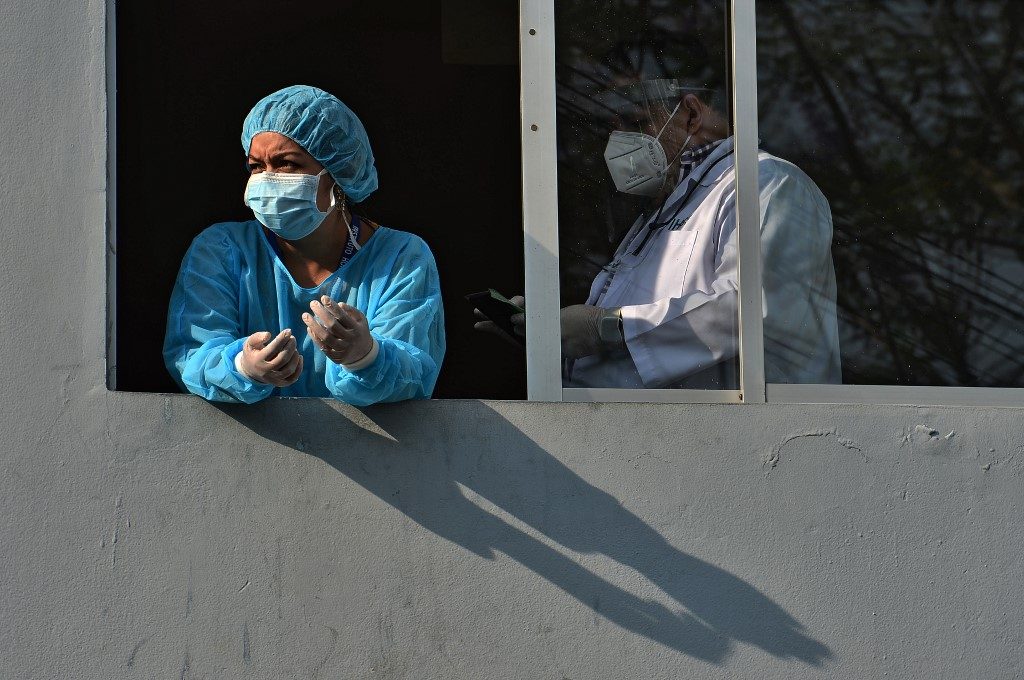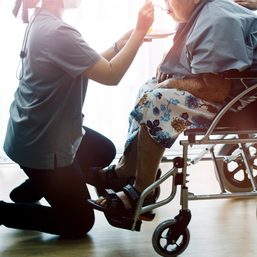SUMMARY
This is AI generated summarization, which may have errors. For context, always refer to the full article.

Health workers have since the beginning of the coronavirus pandemic been disproportionately affected by the crisis, but the WHO said Tuesday, October 13, their high infection levels had finally begun to subside.
While the coronavirus crisis has taken a heavy toll overall, data from many countries and regions show that healthcare workers have been infected at a far higher rate than the general population.
Health workers represent less than 3% of the population in most countries, but have accounted for around 14% of all COVID-19 cases reported to the WHO, and in some countries they have accounted for over a third of cases.
But the UN health agency said analysis of reported data from 83 countries, mainly in Europe and the Americas, now showed that “there has been a substantial decline in (health worker) infection since the beginning of the epidemic.”
The proportion of health workers among the newly infected “is decreasing steadily,” Anne Perrocheau, a WHO epidemiologist, told a virtual press briefing, adding their proportion was now close to their share of the general population.
A number of factors have contributed to the high numbers of health workers infected by the virus, including a dire shortage in the beginning of personal protective equipment (PPE), and insufficient training in how to use it.
Benedetta Allegranzi, the technical lead on WHO’s infection prevention and control task force, told reporters the decline was likely linked in part to increased availability of personal protective gear.
It was also, she said, likely due to better understanding and adherence to infection prevention measures, like “continuously wearing a medical mask or a respirator depending on the situation, frequently performing hand hygiene, keeping physical distance as much as possible.”
The new coronavirus has killed nearly 1.1 million people out of close to 38 million registered infections since it first surfaced in China late last year.
Governments across the globe are struggling to keep up with a sharp rise in infections as the pandemic enters a second deadly wave.
Perrocheau said that while there were large variations in different countries, the downward trend was evident even in countries where overall cases were rising. – Rappler.com
Add a comment
How does this make you feel?

![[Free to Disagree] Sabwatan ng mga doktor at drug companies](https://www.rappler.com/tachyon/2024/04/tl-sabwatan-doktor-drug-companies-April-22-2024.jpg?resize=257%2C257&crop=292px%2C0px%2C720px%2C720px)



There are no comments yet. Add your comment to start the conversation.